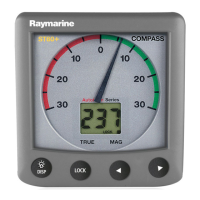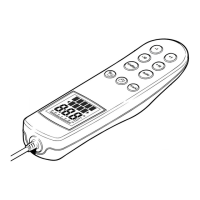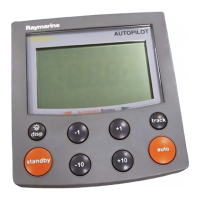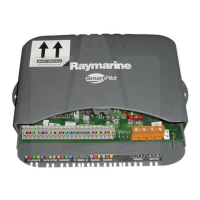8 ST60+ Speed Instrument Owner’s Handbook
Cabling
Examine all cables for chafing or other damage to the outer shield, and where
necessary, replace and re-secure.
2.2 Troubleshooting
Preliminary procedures
Changes in the electronic environment may adversely affect the operation of your
ST60+ equipment. Typical examples of such changes are:
• Electrical equipment has recently been installed or moved aboard your vessel.
• You are in the vicinity of another vessel or shore station emitting radio signals.
If you appear to have a problem, first ensure that the EMC requirements are still
being met before further investigating the problem.
Fixing faults
All Raymarine products are subjected to comprehensive test and quality
assurance programmes prior to packing and shipping. However, if a fault occurs,
the following table may help to identify and rectify the problem.
CAUTION: Prevention of flooding
If you need to remove the transducer insert, have the transducer
bung to hand and secure it in the transducer body immediately
after the insert has been removed, to prevent excessive ingress
of water.
Fault Cause Remedy
Display blank. No power supply. Check power supply & ensure the instru-
ment is switched on (see
Chapter 1,
Operation
).
Check SeaTalk cabling and connector
security.
Check fuse/circuit breaker.
No transfer of informa-
tion between SeaTalk
instruments (e.g. illumi-
nation levels).
SeaTalk cable or
connector fault.
Check security of SeaTalk connectors.
Check condition of SeaTalk cables.
Isolate faulty instrument by disconnect-
ing instruments one by one.
Failure of a group of
SeaTalk instruments.
SeaTalk cable or
connector fault.
Check the security of SeaTalk connec-
tors between functioning and non-func-
tioning instruments.
81261_1.book Page 8 Tuesday, November 29, 2005 12:42 PM
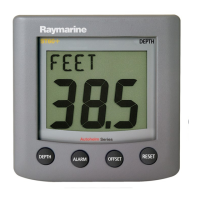
